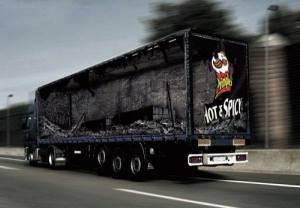Using what is known as a “conformable vinyl wrapping” material, a high-quality print or protective clear wrap can be moulded to almost any and every part of a vehicle. Typically, conformable material is used because it is the easiest to work with, especially on contoured surfaces. Using the proper adhesives when applying the material to the surface of the car is essential, otherwise the wrap can lead to adhesive failure in a few months after the application.
Advancements in plastics have compromising the longevity of the wrap). The vinyl is heated with a heat gun or torch for the purpose of moulding the material around objects.
Decals can be made to cover side and rear windows on a vehicle, but for safety reasons, the front windows used by the driver are not covered. The decals on side windows are typically perforated, so that it is still possible for passengers to look outside. This See-through graphic technology originated in the 1980s, with the first dominant patent registered by a British company called Contra Vision. Wrapped advertisements must often be divided into a number of smaller pieces to appropriately cover any movable panels on the vehicle, such as the fuel tank cover, trunk (boot) openings, and other doors.
Wrapping is also sometimes used instead of paint as a less-permanent way of applying its operator’s standard livery. This has become particularly common in the UK where, since the privatisation of British Rail, it has become quite frequent for trains to be transferred from one company to another, requiring many changes of livery. Wrapping can also be used for vehicle customisation, and race cars often get vehicle wraps as they are lighter than paint.













